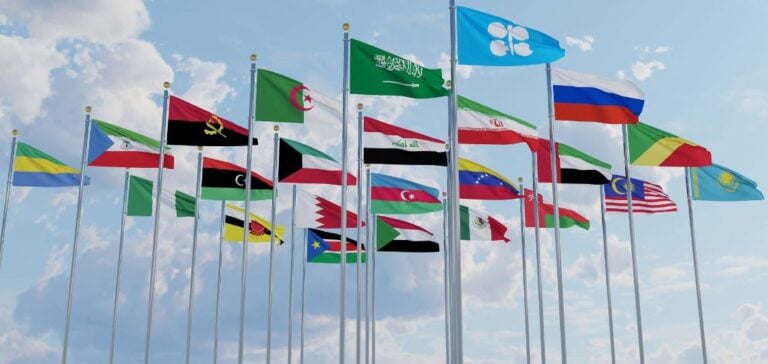In October, the Organization of Petroleum Exporting Countries and its partners (OPEC+) increased their crude oil production by 30,000 barrels per day (b/d), according to the latest report from S&P Global Commodity Insights. This increase is largely due to a 420,000 b/d rise in Libya, offset by a significant reduction from Kazakhstan, as well as more moderate decreases in Iraq and Iran.
Libya’s Role and Internal Challenges
Libya significantly boosted production following the end of a political shutdown on October 3, stemming from disagreements over central bank leadership. However, despite this recovery, Libyan production, due to maintenance at the Sharara oil field, has not returned to its pre-crisis level, reaching 1.15 million b/d. Exempt from OPEC+ quotas due to its chronic instability since the fall of Moammar Gadhafi in 2011, Libya plays a unique role in the alliance’s production dynamics.
Reduction in Kazakh Production
In Kazakhstan, production fell by 300,000 b/d following a three-week maintenance period at the Kashagan field, one of the country’s largest. Despite this decrease, Kazakhstan’s production remains slightly above its quota of 1.203 million b/d, set under an August compensation plan to offset previous overproduction. Kazakhstan thus joins many other OPEC+ producers seeking to adjust output after reported excesses.
Compliance Challenges for OPEC+
Quota compliance remains a persistent issue within OPEC+. In October, OPEC members bound by quotas produced 348,000 b/d above targets, while non-OPEC partners underproduced by 179,000 b/d. These discrepancies have fueled tensions within the group, which must balance price stability with the goal of maintaining market share.
OPEC+ must navigate weak Chinese demand, rising production in other regions, such as the Americas, and market volatility caused by conflicts in the Middle East and Europe.
Voluntary Cutters’ Position on Production Cuts
On November 3, eight voluntary participants, including Saudi Arabia and Russia, postponed a planned reduction of 2.2 million b/d of ongoing cuts until January 2025, concerned that prices would drop further. These reductions are part of a group-wide cut of 5.8 million b/d aimed at stabilizing the market amid economic and geopolitical uncertainties.
OPEC+ Outlook and Future Challenges
According to OPEC’s latest monthly report, the demand for OPEC+ crude oil is estimated at 42.8 million b/d for 2024 and 43.2 million b/d for 2025, significantly above current production levels. This optimistic estimate contrasts with other forecasts and could strengthen OPEC+’s market position if proven accurate. The upcoming ministerial meeting on December 1 will be crucial in determining the group’s future production strategy.
This report, compiled by Platts from industry sources, shipping data, satellite information, and inventory analysis, provides a detailed look at the challenges and adjustments of OPEC+ in an ever-evolving market.






















